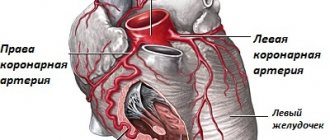What are seromucoids?
Seromucoids are substances that make up loose and dense connective tissues and are present in some quantities in the blood plasma. When connective tissues are damaged, the concentration of seromucoids in the plasma increases sharply. The same is observed after surgical interventions, after operations. Seromucoids are elevated in many inflammatory processes, and determination of their content in the blood can be useful in diagnosis.
So what is it - seromucoid? Essentially, these compounds are complex proteins that contain carbohydrate components. In other words, these are serum glycoproteins that have acidic properties and can be destroyed by strong acids. These proteins are present in excess in the connective tissue of the body, and when it is destroyed they end up in the blood plasma.
Seromucoids are contained in the blood in a certain concentration, regardless of the age and gender of the patient. Normal values range from 0.13 to 0.2 optical density units, or from 1.2 to 1.6 mmol/l. The normal levels of these substances in the blood of women, men and children are the same.
If the analysis reveals a borderline value of the indicators, then a repeat analysis is prescribed 1-2 weeks after the first one - this will help eliminate research errors and understand whether the seromucoids are within normal limits or not.
How to treat
If seromucoids are elevated, this indicates the presence of an inflammatory process in the human body. Treatment depends entirely on the disease that caused the increase in the protein fraction in the plasma.
For rheumatism, antibiotics, immunomodulators, glucocorticoid drugs, gamma globulins and non-steroidal anti-inflammatory drugs are prescribed. After completing the course of treatment, the level of the protein fraction is normalized.
For malignant tumors, chemotherapy or radiotherapy is prescribed, followed by a restorative course of treatment.
After recovery, the indicators return to normal.
Why get tested for seromucoids?
Indications for taking a blood test for seromucoid content most often include assumptions about connective tissue disease or systemic inflammation. The following pathological conditions can increase the number of seromucoids in the analysis:
- respiratory tract diseases - asthma, pneumonia, bronchitis, etc.;
- inflammatory processes in the kidneys - for example, glomerulonephritis;
- rheumatism;
- pancreatitis;
- cholecystitis;
- infertility caused by a chronic, sluggish process, for example, in the pelvic organs;
- lymphogranulomatosis;
- autoimmune diseases;
- tumor processes.
The analysis is carried out not only to make a diagnosis, but also to evaluate the effectiveness of treatment. During therapy, the concentration of seromucoids in the blood is assessed several times - and if it continues to exceed the norm, this means that the chosen treatment strategy is ineffective or the diagnosis is incorrect.
What tests are taken for lung diseases?
A general blood test is prescribed for all pulmonary pathologies. With pneumonia, an acceleration of ESR and an increase in the number of leukocytes are observed. In acute asthma, the number of red blood cells and hemoglobin increases. An increase in the number of eosinophils in an asthmatic indicates a high likelihood of an attack.
Blood biochemistry - in case of pulmonary pathologies, the concentration of protein and its fractions, seromucoid, haptoglobin, and sialic acids is determined. Changes in the concentration of ALT, AST, myoglobin, and electrolytes indicate additional cardiac damage.
Sputum analysis allows you to isolate the pathogen that causes pulmonary pathology and prescribe an antibiotic taking into account its sensitivity. In bronchial asthma, tests reveal blood and a large number of eosinophils. A large number of leukocytes indicates the infectious nature of the pulmonary pathology.
In case of bronchial asthma, tests are taken for immunity - the ability of lymphocytes to activate and determine their phenotypes. Allergy tests are also carried out to show which substances provoke an attack of the disease.
If lung cancer is suspected, patients are tested for tumor markers:
- CEA – carcinoembryonic antigen;
- NSE – neuron-specific enolase;
- Cyfra-21-1 – fragment of cytokeratin 19;
- Pro-GRP – progastrin releasing peptide.
To ensure the reliability of the data, as a rule, an analysis is performed for 2-3 markers. This allows you to avoid mistakes and diagnose the type of tumor.
How does the analysis procedure work?
Venous blood is used to study the concentration of seromucoids. The material is collected in the morning, on an empty stomach. One day before the test, it is necessary to exclude the use of alcohol and medications (or inform the attending physician about their use), and 12 hours before - smoking. It is necessary to avoid physical and emotional stress the day before donating blood. Women should consult with their doctor in advance about choosing to donate blood, as their test results may be affected by the timing of their menstrual cycle.
It is contraindicated to be nervous on the day of the test. In addition, after donating blood, it is recommended to avoid physical activity and follow a moderate diet to quickly restore lost blood volume. If blood is to be donated to a child, parents need to ensure that the child is calm and not subjected to excessive physical activity.
The test is carried out by separating the blood serum and then analyzing the serum particles using a spectrophotometer or photometer. The principle of the analysis is that the serum particles of the substance absorb light in different ways. Both an increase and a decrease in the concentration of seromucoids may indicate unfavorable processes. An increase in concentration is caused by:
- various inflammatory conditions;
- Jaundice;
- rheumatism;
- pulmonary tuberculosis;
- exacerbation of chronic diseases, for example, cholecystitis;
- myocardial infarction and stroke.
A decrease in seromucoid concentration indicates that the liver does not synthesize protein sufficiently; this is an indicator of liver dystrophy, cirrhosis, hepatocellular and liver failure, alcoholic and viral hepatitis, or hepatocellular carcinoma. Low levels of albumin, seromucoid, prothrombin and protein in general are a reason to seriously check the liver.
Blood test for cholesterol - lipid profile
In order to determine the risk of developing vascular atherosclerosis, it is enough to take a total cholesterol test. If the indicator is normal, there is no need to worry. True, if nothing bothers you, and you have a good heredity behind you for cardiovascular diseases. If not, or the indicator is elevated, it is important to take a full lipid profile and find out the “balance of power” between different fractions of cholesterol.
Triglycerides (TG). Normal – 0.41−1.8 mmol/l
Triglycerides are the main store of fats in our body; they are formed in the liver. In most cases, elevated levels of triglycerides (the so-called blood chylosis) are a consequence of poor nutrition with excess fatty foods and carbohydrates, so the test should be taken no earlier than 9 hours after the last meal. The cause of the increase may be primary (hereditary) hyperlipidemia , and, much more often, secondary hyperlipidemia, including poor nutrition, obesity, impaired glucose tolerance and diabetes mellitus, hypothyroidism, gout, liver, pancreas and kidney diseases. Also, the cause of the increase may be stress, alcohol abuse, and taking certain medications (beta blockers, corticosteroids, diuretics and some others). A decrease in values is recorded with malnutrition, hyperthyroidism, malabsorption, and long-term intake of vitamin C.
Total cholesterol (CHOL). Normal – 3.2−5.6 mmol/l
The most important lipid, which is a structural component of all cell membranes, a precursor of sex hormones, corticosteroids, bile acids and vitamin D. Up to 80% of cholesterol is synthesized in the liver, the rest enters our body with food. The cholesterol content in the blood largely depends on age, so for an infant the upper limit of normal is 5.25 mmol/l , and for a man over 70 – 6.86 mmol/l . Cholesterol is carried by couriers called lipoproteins, of which there are three main types - high density, low density and very low density. An increase in total cholesterol, as well as triglycerides, occurs with primary and secondary hyperlipidemia.
Despite the fact that screening studies have adopted average limits for total cholesterol (5.6 mmol/l) and its components, doctors currently use tables of norms in accordance with gender and age.
Cholesterol-HDL (HDL). Normal – not less than 0.9 mmol/l
This cholesterol fraction is involved in the transport of cholesterol from peripheral tissues to the liver. This means that they take cholesterol from the surface of blood vessels, including the legs, heart, and brain, and carry it to the liver. This means that HDL plays an important anti-atherogenic role, preventing the formation of cholesterol plaques and the development of atherosclerosis. And if the level of total cholesterol is increased due to HDL cholesterol, this is considered a good prognostic factor, and cholesterol should not be reduced. At the same time, a decrease in the level of “good” cholesterol below 0.90 mmol/L for men and 1.15 mmol/L for women is considered a risk factor for atherosclerosis.
LDL cholesterol (LDL). Normal – 1.71−3.5 mmol/l
Low-density lipoproteins are the main carrier of cholesterol in our body. It is he who carries the fat synthesized in the liver to organs and tissues. It is believed that the level of LDL cholesterol has a much greater influence on the development of atherosclerosis than the level of total cholesterol. That is why it came to be called “bad” cholesterol. In conditions where the vascular wall is compromised by risk factors (nicotine, high concentrations of glucose, homocysteine, increased blood pressure), LDL cholesterol is deposited in it, forming an atherosclerotic plaque. For people with risk factors for atherosclerosis (age over 45 years for men and 55 years for women, cases of early death from cardiovascular diseases among relatives, smoking, diabetes mellitus, hypertension, obesity), the LDL cholesterol level should not exceed 3.37 mmol/l , values from 3.37 to 4.12 mmol/l are regarded as a medium risk factor for the development of atherosclerosis, and above 4.14 mmol/l - as high.
VLDL cholesterol (VLDL). Normal – 0.26−1.04 mmol/l
These lipoproteins are synthesized in the liver and small intestine and serve as precursors of LDL, that is, they are also carriers of “bad” cholesterol.
Atherogenicity index (coefficient)
This is an indicator that can be calculated based on the lipid profile results.
2.0 to 2.5 units is considered normal The maximum normal values are 3.2 for women and 3.5 for men. Everything above indicates a significant risk of developing atherosclerosis and requires measures to reduce it, which can be either non-medicinal (changing diet, losing weight, quitting smoking, combating physical inactivity, taking various dietary supplements) or medicinal (taking medications from various groups, mainly statins).
Treatment and prevention
An increase in seromucoids in the blood is not an independent disease. This is only a symptom of pathological processes occurring in the body, the etiology of which can be completely different. Therefore, there is no single medicine to normalize the level of seromucoids - it is necessary to establish the cause of the disease and purposefully treat it.
For example, for rheumatism, the patient is prescribed complex therapy consisting of antibiotics, immunomodulators, hormonal and anti-inflammatory drugs. Usually this treatment is effective and after completing the full course, the level of seromucoids decreases.
If the increase in seromucoids is caused by a malignant tumor, then the entire arsenal of anti-oncology drugs is used - chemotherapy, radiotherapy, and other methods of fighting cancer.
There is no prophylaxis against increased seromucoid levels as such. Often this condition is caused by diseases whose occurrence is genetically determined (asthma, rheumatism, cancer). Therefore, the only way to prevent it is to maintain a healthy lifestyle, which reduces the likelihood of such diseases. It should be reflected in the absence of bad habits, moderate regular physical activity, a balanced diet and compliance with personal and public hygiene standards.
Prevention of tuberculosis (which also results in an increase in the concentration of seromucoids) consists of timely vaccination, avoiding contact with infected people, and observing safety and hygiene rules when working in damp, dark, dirty rooms.
Tests for IgM and IgG antibodies to pathogens of bronchopulmonary infections
This method allows you to identify the pathogen that caused the disease and determine the duration of infection. The presence of IgM antibodies indicates a recent infection, and IgM indicates something that happened quite a long time ago.
The analysis can be negative, positive and doubtful. If the result is questionable, you need to be examined again after 2 weeks. An antibody test is prescribed for the following diseases:
- Pneumonia - IgM and IgG antibodies are detected against the pathogen Chlamydophila pneumonia, which often causes this disease.
- Atypical pneumonia, in which antibodies to Mycoplasma pneumoniae are detected.
- Whooping cough, determined by testing for the whooping cough bacillus Bordetella pertussis.
- Respiratory syncytial virus, infection of which causes flu-like symptoms. The disease is often complicated by severe bronchitis, pneumonia, and respiratory failure.
Peptides in blood tests
One of the convenient options for checking blood biochemistry for normal values is the corresponding table. If the C-peptide is higher, then there is a suspicion of excessive insulin synthesis, the development of tumor formation or pancreatitis. A decrease compared to the standard may occur, this is possible during inflammation or diabetes (only the first type).
Content of glucose and carbohydrate metabolism metabolites
In diabetes mellitus, glucose increases, other reasons: problems with the central nervous system, pituitary gland, thyroid gland, brain injuries. If normal blood biochemistry levels for glucose in adults are underestimated, it is worth checking the endocrine system, liver and pancreas.










